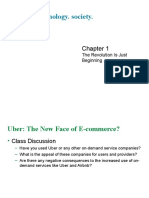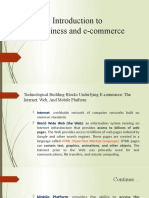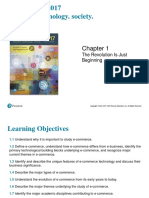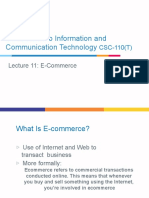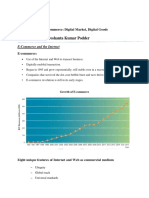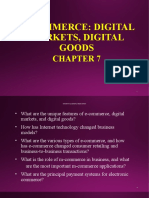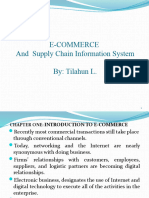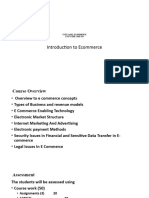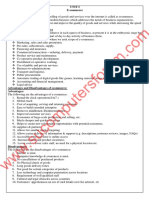0% found this document useful (0 votes)
17 views43 pagesUnit III
This document discusses several topics related to e-commerce including:
1) The meaning of e-commerce and difference between e-commerce and e-business.
2) Technological building blocks like the internet, world wide web, mobile platforms, and differences between surface web and deep web.
3) Major trends in e-commerce and conceptual framework of e-commerce including the 5 C model of commerce, collaboration, communication, connection, and computation.
Uploaded by
Venom MasterCopyright
© © All Rights Reserved
We take content rights seriously. If you suspect this is your content, claim it here.
Available Formats
Download as PDF, TXT or read online on Scribd
0% found this document useful (0 votes)
17 views43 pagesUnit III
This document discusses several topics related to e-commerce including:
1) The meaning of e-commerce and difference between e-commerce and e-business.
2) Technological building blocks like the internet, world wide web, mobile platforms, and differences between surface web and deep web.
3) Major trends in e-commerce and conceptual framework of e-commerce including the 5 C model of commerce, collaboration, communication, connection, and computation.
Uploaded by
Venom MasterCopyright
© © All Rights Reserved
We take content rights seriously. If you suspect this is your content, claim it here.
Available Formats
Download as PDF, TXT or read online on Scribd
/ 43
